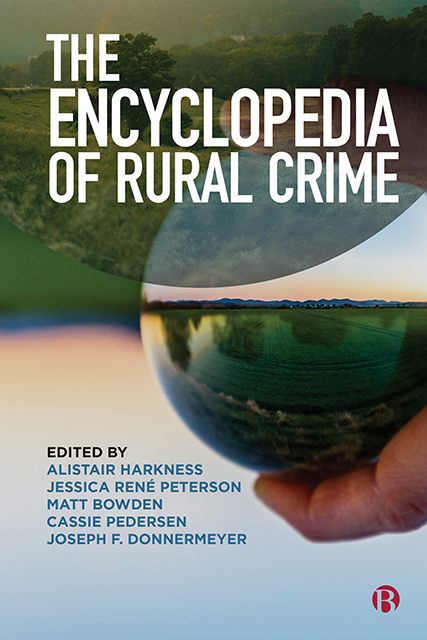Book contents
67 - Technology in Rural Criminal Justice Systems
Published online by Cambridge University Press: 20 June 2023
Summary
Technology has a significant impact – including both advantages and disadvantages – on rural criminal justice agencies and their capabilities regarding efficiency, effectiveness and supervision. Although the connectivity gap is narrowing, connectivity and communication remain limited by poor Internet access and cellular service in many rural settings. For example, the International Telecommunication Union found that 71 per cent of rural areas in the world had access to 4G mobile network coverage in 2020, compared with 95 per cent of the world’s urban locations. This gap increases in underprivileged areas (such as Tribal areas in North America) and developing nations worldwide. Lack of funding in many rural jurisdictions can affect both the quantity and quality of technological services provided to and by justice-involved agencies such as law enforcement, the courts and corrections.
Technology in rural law enforcement
Technological tools in law enforcement have changed and improved enormously since the 1980s and are primarily used for identifying, locating and apprehending individuals engaged in crime. Computers and laptops are commonly used for recordkeeping, report-writing, suspect identification and apprehension via social media, communicating with the public, crime-mapping, data analysis and access to federal databases such as the FBI’s Automated Fingerprint Identification System. Equipment such as body-worn cameras, stun and TASER guns, ‘soft’ projectile weapon systems, vehicle license plate readers, gunshot location technology, night vision or thermal imaging detectors and more, have become standard in many metropolitan agencies across the Global North, with some even deploying drones, robotic dogs and facial recognition software in their patrols. Whilst these devices and ‘smart policing’ practices bring with them controversy and many legal concerns regarding citizen privacy and biases, they do allow law enforcement to act swiftly and – at least from the law enforcement perspective – more efficiently.
The necessity for the most advanced equipment in rural locations is particularly debateable, but the lack of many devices that have become staples in urban policing is cause for concern. Law enforcement officers in rural areas may rely on outdated ‘police mobile computers’ and ‘record management systems’, lack high-quality recording devices such as body-worn cameras and dashboard cameras and have limited performance vehicles and equipment.
- Type
- Chapter
- Information
- The Encyclopedia of Rural Crime , pp. 265 - 268Publisher: Bristol University PressPrint publication year: 2022

